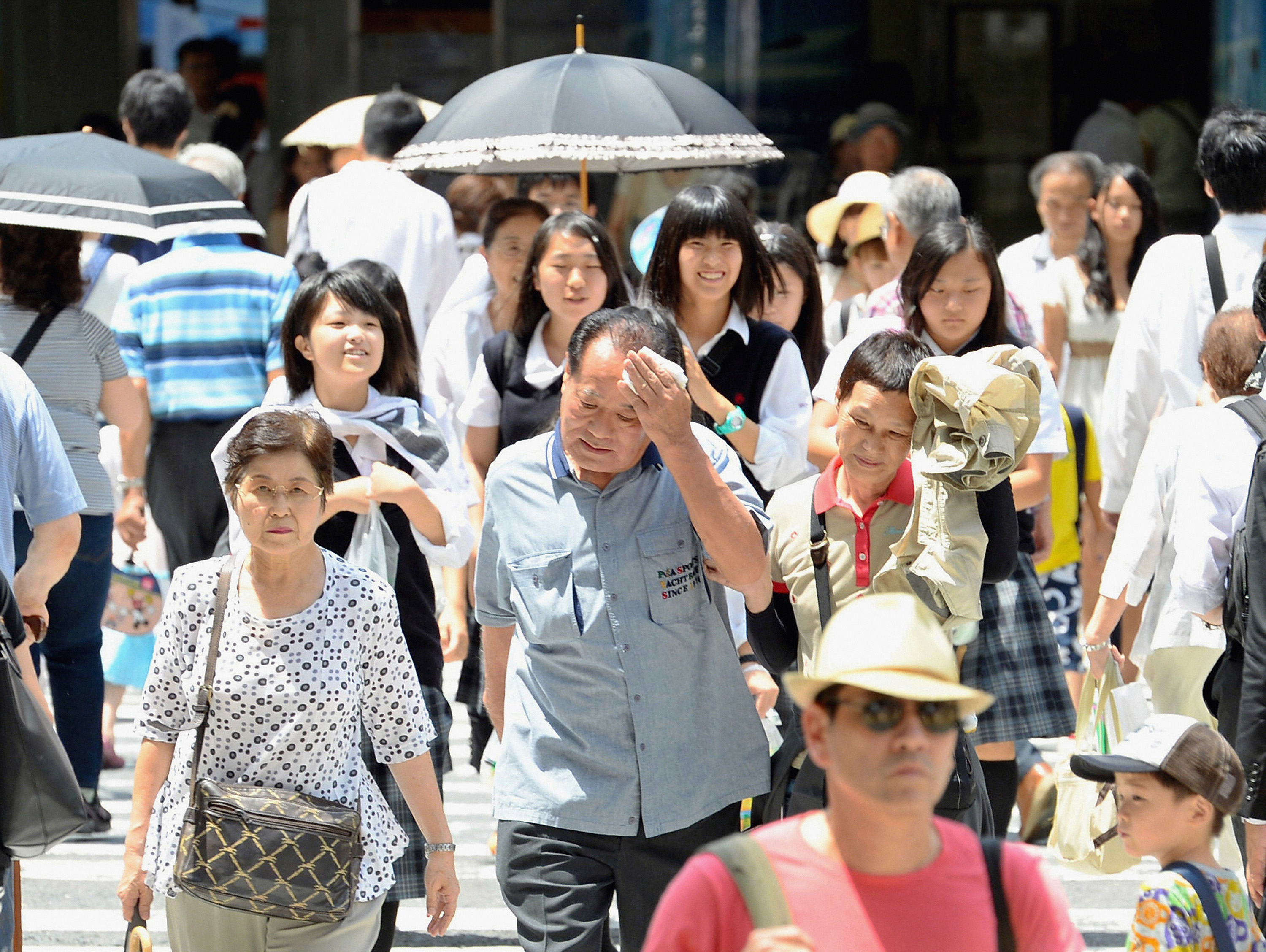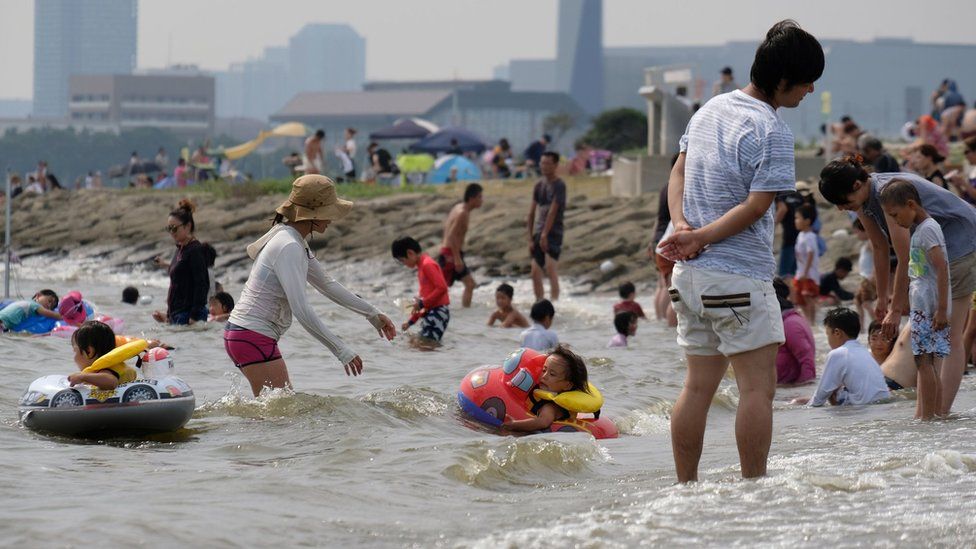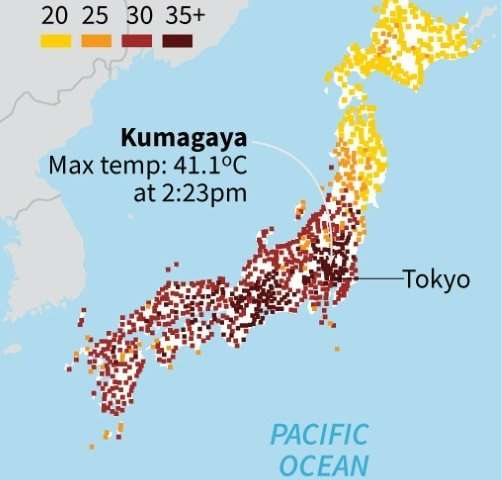CLIMATE CHANGE KILLS
Posted on: July 26, 2020




THIS POST IS A CRITICAL REVIEW OF A SLATE ARTICLE ON EVENT ATTRIBUTION SCIENCE TITLED “The First Undeniable Climate Change Deaths. In 2018 in Japan, more than 1,000 people died during an unprecedented heat wave and Scientists prove that it would have been impossible without climate change” JULY 23 2019, [LINK]
PART-1: WHAT THE ARTICLE SAYS
- July 23, 2018, was a day unlike any other seen before in Japan. It was the peak of a weeks long heat wave that smashed previous temperature records across the historically temperate nation. The heat started on July 9, on farms and in cities that only days earlier were fighting deadly rains, mudslides, and floods. As the waters receded, temperatures climbed. By July 15, 200 of the 927 weather stations in Japan recorded temperatures of 35 degrees Celsius, about 95 degrees Fahrenheit, or higher. Food and electricity prices hit multiyear highs as the power grid and water resources were pushed to their limits. Tens of thousands of people were hospitalized due to heat exhaustion and heatstroke. On Monday, July 23, the heat wave reached its zenith. The large Tokyo suburb of Kumagaya was the epicenter, and around 3 p.m., the Kumagaya Meteorological Observatory measured a temperature of 41.1 degrees Celsius, or 106 F. It was the hottest temperature ever recorded in Japan, but the record was more than a statistic. It was a tragedy: Over the course of those few weeks, more than a thousand people died from heat-related illnesses. These people are the first provable deaths of climate change. On July 24, the day after the peak of the heat wave, the Japan Meteorological Agency declared it a natural disaster. A disaster it was. But a natural one? Not so much.
- In early 2019, researchers at the Japan Meteorological Agency started looking into the circumstances that had caused the unprecedented, deadly heat wave. They wanted to consider it through a relatively new lens—through the young branch of meteorology called Attribution Science, which allows researchers to directly measure the impact of climate change on individual extreme weather events.
- Attribution science, at its most basic, calculates how likely an extreme weather event is in today’s climate-changed world and compares that with how likely a similar event would be in a world without anthropogenic warming. Any difference between those two probabilities can be attributed to climate change.
Attribution science was first conceived in the early 2000s, and since then, researchers have used it as a lens to understand the influence of climate change on everything from droughts to rainfall to coral bleaching. As scientists have long predicted, the vast majority of extreme weather events studied to date have been made more likely because of climate change. But the 2018 Japan heat wave is different. As people who lived in Japan knew at the time, the oppressive temperatures were more than unusual. They were unprecedented. In fact, without climate change, they would have been impossible. “We would never have experienced such an event without global warming,” says Yukiko Imada of the Japan Meteorological Agency.
PART-2: CRITICAL COMMENTRY
- Event Attribution Science is a methodology of using climate model simulations to attribute extreme weather events such as heat waves, floods, and droughts, post hoc, (after the fact) to anthropogenic global warming thought to be driven by fossil fuel emissions and thereby ultimately to attribute the extreme weather event to the use of fossil fuels with the presumption that such extreme weather events can be avoided with climate action in the form of overhauling the world’s energy infrastructure away from fossil fuels.
- The procedure suffers from confirmation bias, circular reasoning, and the extreme localization in time and space in the interpretation of a theory about long term trends in global mean temperature. The localization issue is described in the literature as “internal variability” of climate.
- Internal Climate Variability: The localization issue refers to the impossibility of separating the natural from the anthropogenic in what is described as internal climate variability. This observation derives from the finding that although climate models can relate long term global trends to fossil fueled anthropogenic global warming, this relationship falls apart at brief time scales of 30 years or less and with localization of climate to geographical regions less than large latitudinal extents. Global warming theory is a global issue and its interpretation is not possible in specific regions, particularly when the region is selected post hoc.
- On June 7, 2019, Imada, Masahiro Watanabe, and others published an attribution study of the 2018 Japan heat wave in the journal Scientific Online Letters on the Atmosphere. the study found that the deadly event of the previous summer “could not have happened without human-induced global warming.” This heat wave is not the first extreme event found to be only possible because of climate change. But it is the first short-lived event, and the first to have direct impacts on human health. Given that tens of thousands were hospitalized and more than a thousand died due to the heat wave, in a sense, these people are the first provable deaths of climate change. For Watanabe, the result wasn’t unexpected. It was more of a grim inevitability. “It was not that surprising,” he says of his unprecedented result. An event like this was “naturally expected as global mean temperature continued to rise.”
- But for both Watanabe and Imada, it holds real historical significance. “It is very sensational for me because human activity has created a new phenomenon. Human activity has created a new phase of the climate,” says Imada. Attribution science is giving us the ability to watch, in real time, the consequences of our actions. The future that the heat wave of 2018 represents is one we knew was coming. It is here, today, and attribution science gives scientists and the world the ability to say so with conviction. There’s another way in which the new field might prove useful. At the end of our conversation, Watanabe paused to reflect on the work he has done. Attribution science compares the world of today with a world without climate change. In some ways, he’s started to see his work as a signpost in history, reminding us of a world that used to exist, but no longer does.
- In a related post on Internal Variability [LINK] we find that “at short time scales of 30 years or less, or in limited geographical extents, internal variability of climate confounds assessment of human-induced climate change and imposes irreducible limits on the accuracy of climate change projections and climate change impacts“.
- The Dark Bureaucratic Origins of Event Attribution [LINK] : Event Attribution Analysis is best understood in the context of its origins. A necessary and assumed catastrophic nature of AGW is needed as the rationale for the UNFCCC policy that requires Annex I countries to reduce emissions by changing their energy infrastructure from fossil fuels to renewables. This line of reasoning is weakened by an inability of climate science to produce empirical evidence that relates extreme weather disasters to emissions. Of particular note in this regard is that claims made by the IPCC in 2007 with regard to the effect of AGW on the frequency and intensity of tropical cyclones, droughts, and floods were retracted in their next Assessment Report in 2014. Thus, climate scientists, though convinced of the causal connection between AGW and extreme weather events, are nevertheless unable to provide acceptable empirical evidence to support what to them is obvious and “unequivocal” but for which climate science has neither empirical evidence nor a methodology that could serve as the tool for presenting such evidence.
- A breakthrough came for climate science in 2013 when the Warsaw International Mechanism (WIM) was signed [LINK] . This mechanism has to do with the complex classification of nation states in the Kyoto Protocol and the UNFCCC in which poor developing nations of the Global South are classified as (Non-Annex countries) with no climate action obligations. Rich developed Western countries of the Global North (Annex-1 countries) are assigned the entire burden of global emission reduction along with the additional burden of providing financial compensation to the non-Annex countries of the Global South for extreme weather impacts of climate change.
- When the Annex-1 providers of climate impact compensation funds requested evidence to separate extreme weather events that are natural from those caused AGW climate change, the United Nations organized the meeting in Warsaw in 2013 to discuss and resolve this issue. The Warsaw International Mechanism (WIM) of 2013 has redefined climate change adaptation funding as a form of compensation for “loss and damage” suffered by nonAnnex countries because of sea level rise or extreme weather events caused by fossil fuel emissions which are thought to be mostly a product of Annex-1 countries. Accordingly, the WIM requires that loss and damage suffered by the nonAnnex countries for which compensation is sought from climate adaptation funds must be attributable to fossil fuel emissions.
- A probabilistic methodology was devised to address the need for attribution in the WIM and It has gained widespread acceptance in both technical and policy circles as a tool for the allocation of limited climate adaptation funds among competing needs of the non-Annex countries. The probabilistic event attribution methodology (PEA) uses a large number of climate model experiments with multiple models and a multiplicity of initial conditions. A large sample size is used because extreme weather events are rare and their probability small by definition. The probability of an observed extreme weather event with anthropogenic emissions and the probability without anthropogenic emissions are derived from climate model experiments as P1 and P0. If the probability with emissions (P1) exceeds the probability without emissions (P0), the results are interpreted to indicate that emissions played a role in the occurrence of the event in question and that therefore it is fundable. Otherwise the event is assumed to be a product of natural variation alone. The probability that fossil fuel emissions played a role in the extreme weather event is represented as P = (P1-P0)/P0. The procedure serves the bureaucratic needs of the UN but is mired in procedural issues such as confirmation bias and uncertainty.
- A contentious issue in PEA analysis is that of uncertainty in the values of P0 and P1 and in the model results themselves. Policy analysts fear that the large uncertainties of climate models provide sufficient reason to question the reliability of PEA to serve its intended function as a criterion for access to climate adaptation funds. Mike Hulme and others argue that much greater statistical confidence in the PEA test is needed to justify denial of adaptation funding for loss and damage from weather extremes that do not pass the PEA test.
- The greater concern is that climate science assumes the relationship between AGW and extreme weather impacts but suffers from a critical need for a methodology to provide evidence for it. It is in this context that climate science seized upon the bureaucratic PEA procedure of the WIM, extended the interpretation of PEA results beyond their intended function of fund allocation, renamed it as Event Attribution Science, and adopted it as the climate science methodology that can relate extreme weather events to Anthropogenic Global Warming (AGW).
- This enthusiastic innovation in climate science was initiated by climate scientist Friederike Otto (Oxford). For the purpose of this extension of the PEA procedure of the WIM to a form of climate science, its name was changed from PEA to Event Attribution Analysis and then elevated by Scientific American to Event Attribution Science in an article extolling its virtues. In a related post [LINK] .
- Yet, the methodology suffers from confirmation bias and as mentioned above, the procedure has no validity in the context of the internal climate variability issue because extreme weather events are by definition localized in time and space such that their causal relationship to long term trends in global mean temperature cannot be ascertained.


July 26, 2020 at 5:13 pm
Reblogged this on uwerolandgross.